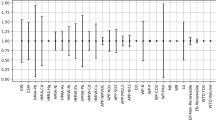Conclusion
Neither quantitative nor toxicological criteria can be used for decision making without an evaluation process in which objectives are defined. Science must monitor this process, but cannot be responsible for the political function of setting priorities. The possibilities of science in this context are often over-estimated. In addition, defined priorities must be reviewed at regular intervals as the statements made on the basis of this methodology will not necessarily remain valid permanently.
With action-oriented priority lists, risk perception also plays an important role. This depends on the information available and the degree to which damage is perceived, and is determined by the social consensus as to what constitutes damage.
It is essential that the priority-defining methods are transparent. This calls for careful documentation of the basic data. Only if the methodological limitations with regard to priority definition are indicated and identified is it possible to hold action-oriented discussions and to obtain acceptance for a chosen method, however, impermanent and inevitably imperfect it might be.
Similar content being viewed by others
References
Buwai (1991). Ökobilanzen von Packstoffen, Stand 1990. Bundesamt für Umwelt, Wald und Landschaft, Bern (Hrsg.). Schriftenreihe Umwelt Nr. 132
Giegrich, J., U. Mampei. (1993). Ökologische Bilanzen in der Abfallwirtschaft. Studie im Auftrag des Umweltbundesamtes, Berlin, 1993
Grahii, B., J. Lohsef, E. Schmincke (1992). Analyse methodischer Ansätze zur Klassifikation von Stoffen und Produkten aus dem Hausmüll im Hinblick auf deren Relevanz für die Vermeidung. Gutachren im Rahmen der Vorstudie zur TA-Abfallvermeidung und Hausmüllentsorgung im Auftrag des Büros für Technikfolgen- abschätzung des Deutschen Bundestages. Materialien zum TAB-Arheitsbericht Nr. 16, Bonn Juli 1993
Guinee, J., R. Hfijungs (1993). A Proposal for the Classification of Toxic Substances within the Framework of Life Clycle Assessment of Products. Chemosphere, 10 (1993) 1925–1944
KBWS. (1991). Bewertungsmerkblatt der Kommission Bewertung wassergefährdender Stoffe (KBwS) zur allgemeinen Verwal-tungsvorschrift über die nähere Bestimmung wassergefährdender Stoffe und ihrer Einstufung entsprechend ihrer Gefährlichkeit (VwVwS) zu Paragraph 19g WHG
Schmidr-Bleek, F. (1994). Wieviel Umwelt braucht der Mensch? MIPS, das Mals für ökologisches Wirtschaften. Birkhäuser-Verlag, Berlin, Basel, Boston
Author information
Authors and Affiliations
Rights and permissions
About this article
Cite this article
Grahl, B., Schmincke, E. Evaluation and decision-making processes in life cycle assessment. Int. J. LCA 1, 32–35 (1996). https://doi.org/10.1007/BF02978630
Issue Date:
DOI: https://doi.org/10.1007/BF02978630




